—story and photos by Matt Milkovich
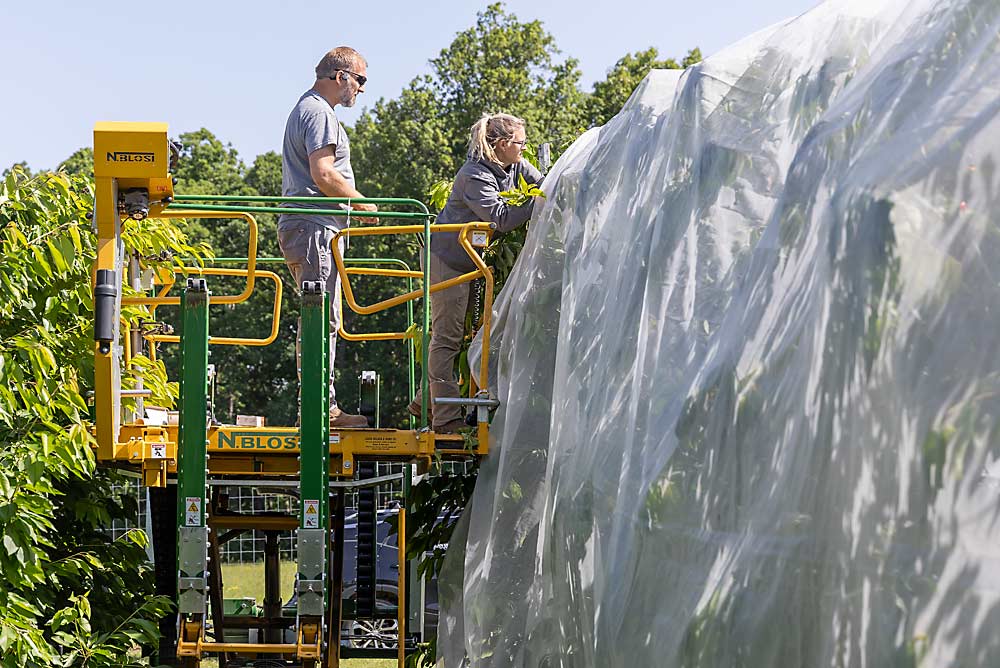
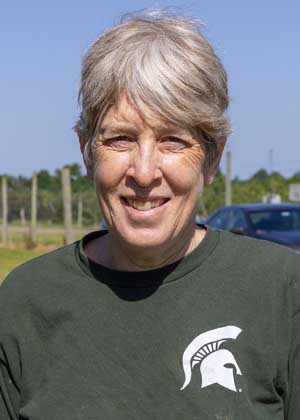
The number of high-density sweet cherry plantings is increasing in Michigan, but management questions remain. Among them: How do you protect the cherries from birds?
As growers plant smaller trees closer together than in conventional processing orchards, they create a different, and perhaps friendlier, environment for pests. On the flip side, tighter, modern plantings have potential pest management benefits. For example, it’s much easier to install protective coverings over a row of dwarf trees.
With funding provided by the U.S. Department of Agriculture’s Specialty Crop Block Grant Program (via the Michigan Tree Fruit Commission), Michigan State University associate professor and bird ecologist Catherine Lindell has been studying the effects of nets on bird damage in high-density sweet cherries. She also studied net effects on spotted wing drosophila, as well as fruit quality. The overall results were positive, she said.
Lindell’s lab conducted netting studies in 2023 and 2024. They used ExcludeNet bought from The Berry Patch in Stephentown, New York. The 85-gram netting is tight enough to exclude spotted wing drosophila. A 26-foot by 328-foot panel cost $1,700, she said.
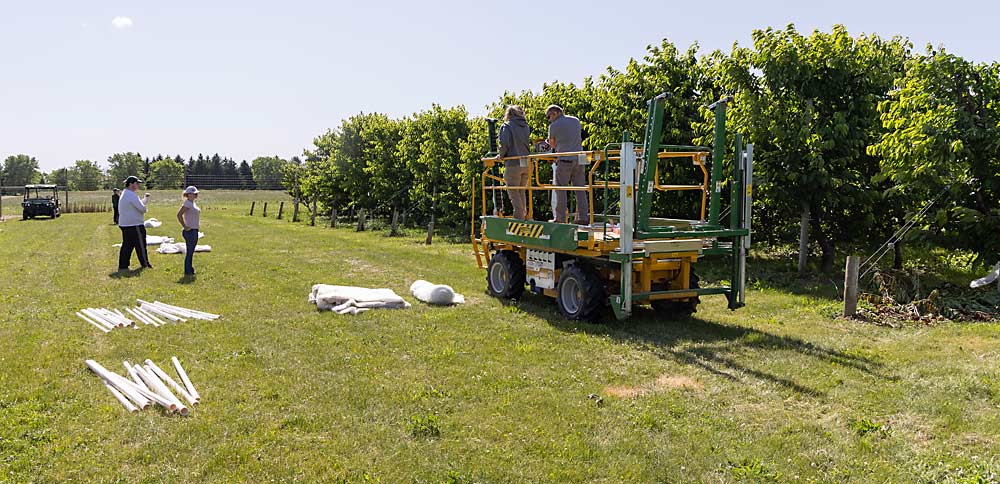
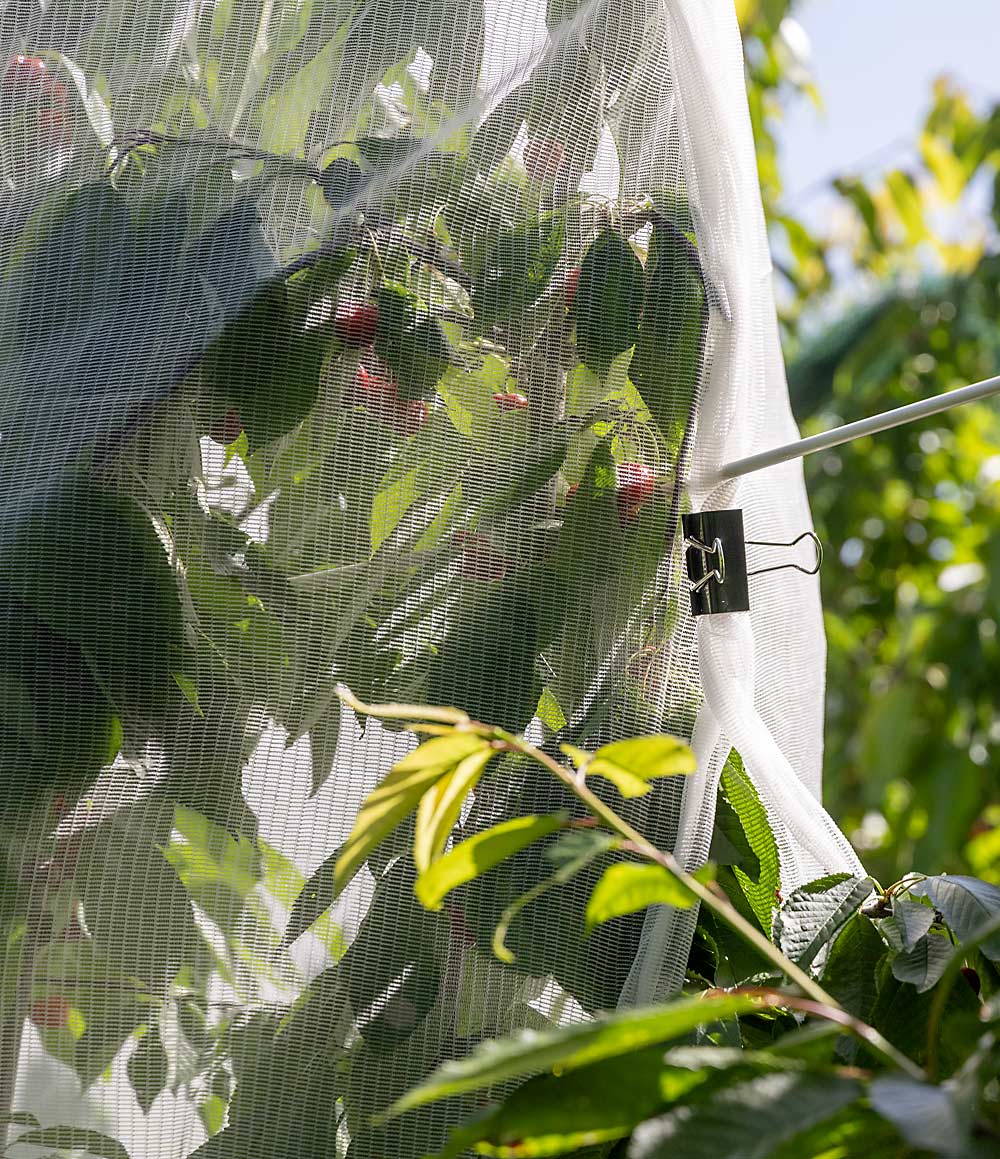
Once draped over the trees, the net bottoms were rolled around PVC pipes and secured with stakes. They used binder clips (bought from a stationery store) to seal the ends, she said.
At MSU’s Clarksville Research Center, they draped nets over high-density rows of Santina and Sweetheart. At MSU’s Northwest Michigan Horticulture Research Center (NWMHRC), they draped them over Benton and Black Pearl. They netted four 8- to 12-meter row sections at each research station, with an adjacent row of the same variety, system and spacing serving as the control.
They installed the nets two to three weeks before harvest, when the fruit is most susceptible to bird feeding and damage. In Michigan, the guilty birds are typically cedar waxwings, common grackles and American robins, Lindell said.
She saw significantly lower bird damage in netted rows compared to unnetted rows, and fruit quality measures — such as color, weight, soluble solids, canker presence or number of cracked cherries — showed no significant difference. SWD was not present early in 2023 (a dry year), but in 2024, the netted rows had lower numbers of adults and larvae. The only potentially negative effect of nets was that fruit Brix was higher in the control rows in 2024 (although there was no difference in 2023), she said.
Lindell’s lab also studied nets over high-density Honeycrisp trees in Northwest Michigan last year. Those nets were used to block birds and codling moth. They’re still analyzing data from that trial, she said.
In Northwest Michigan, home to most of the nation’s tart cherries, the “massive quantity of fruit” at harvest ensures that no single tart cherry grower experiences too much bird damage, said grower Isaiah Wunsch. However, he is starting to see a “concerning amount” of bird damage in his 5-year-old planting of Black Pearl, an early ripening sweet cherry for the fresh market, he said.
Wunsch doesn’t cover his high-density cherries, but if doing so would minimize cherry cracking and brown rot, along with bird damage, and maybe even allow him to manipulate the ripening date by a few days, he would certainly consider it, he said.
“Netting and physical barriers are always the most expensive intervention you can make as an orchardist,” Wunsch said.
NWMHRC coordinator and MSU extension specialist Nikki Rothwell said nets and other protective covers are probably out of the price range of most Michigan cherry growers right now, but if and when modern fresh plantings start to earn higher profits, growers will be better able to afford them and the benefits they bring.
Lindell hopes to conduct a thorough economic analysis of the project in the near future, she said. •






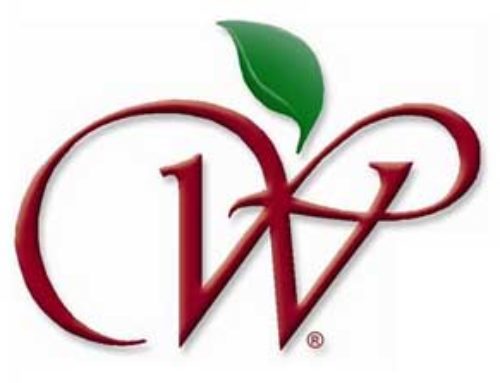
Leave A Comment